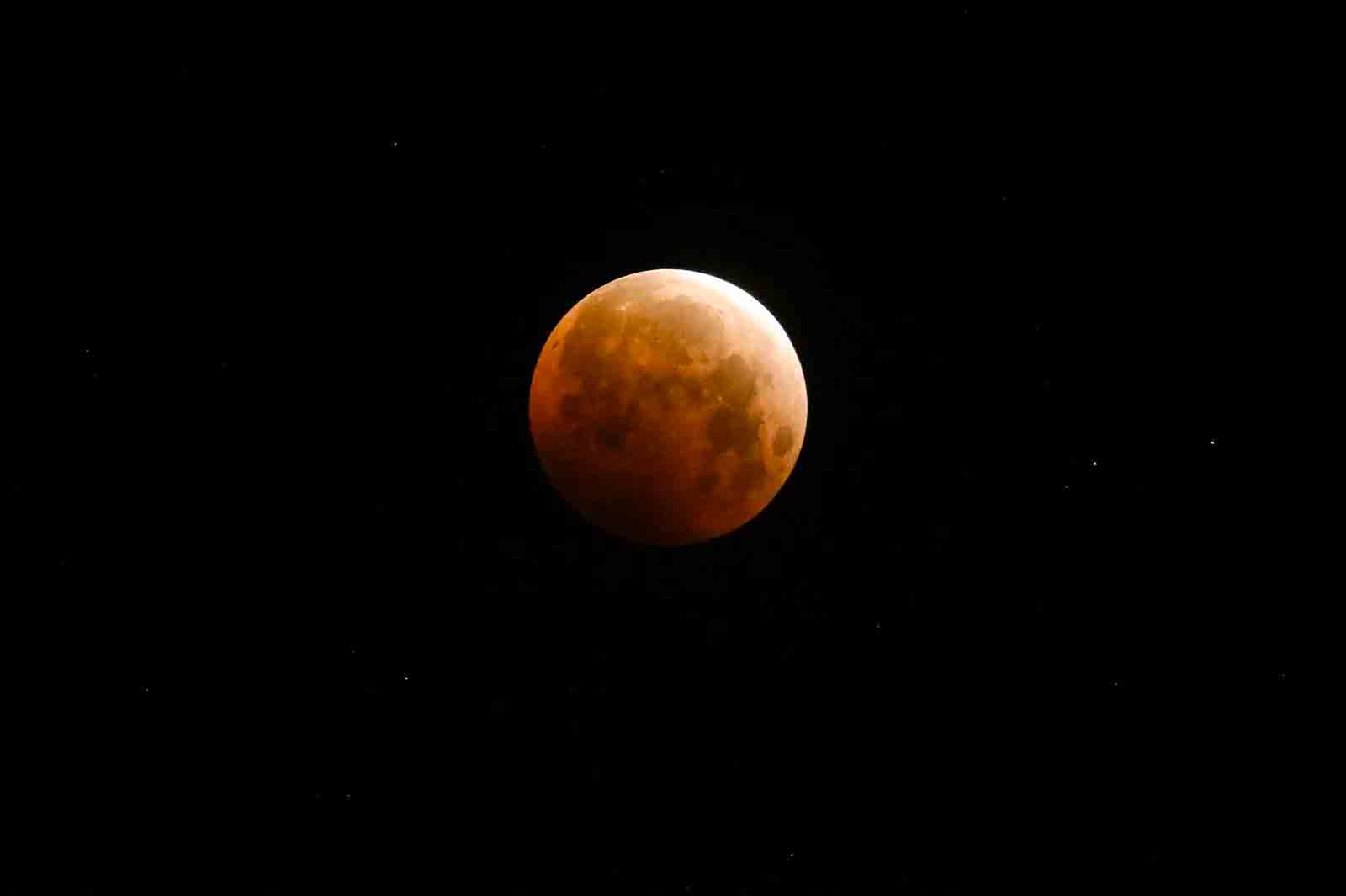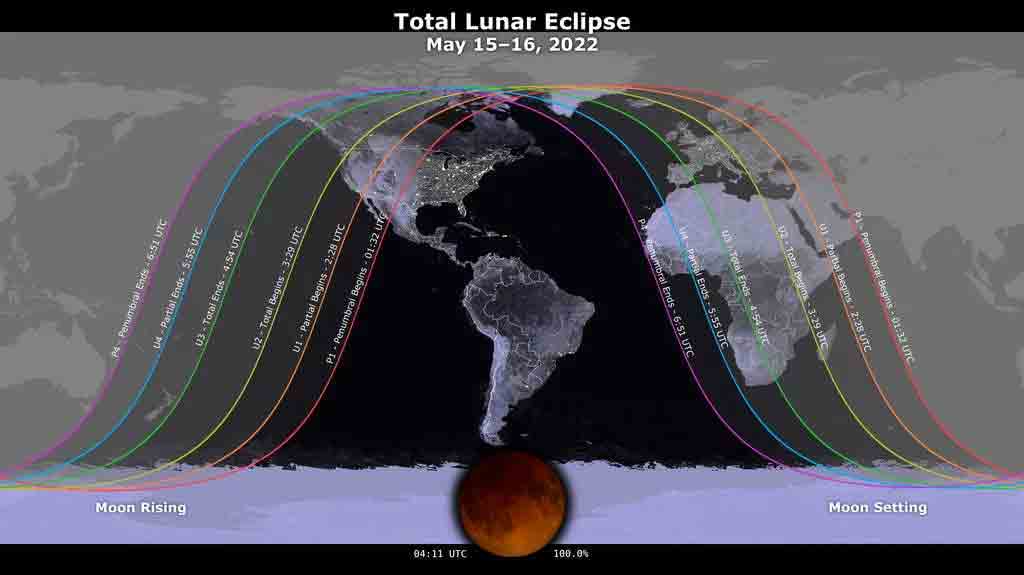 VIEW LARGER Light shines from a total lunar eclipse over Santa Monica Beach, Calif., in May 2021.
VIEW LARGER Light shines from a total lunar eclipse over Santa Monica Beach, Calif., in May 2021. According to NASA, the moon will begin to enter Earth's shadow – also known as the umbra – around 10:30 p.m. ET on Sunday.
Totality – or the period when the moon is fully immersed in Earth's shadow – will begin at about 11:30 p.m. ET and last for roughly an hour and a half.
The eclipse ends just before 2 a.m. ET Monday morning.
A lunar eclipse is safe to look at with your naked eyes
At least part of the eclipse will be visible across most of the Americas, Europe and Africa, NASA says, with large portions of the continents able to see the total eclipse.
Viewers in South America as well as the continental U.S. will be able to see the total eclipse, when the moon is fully in Earth's shadow. Those on the East Coast will be able to see the eclipse high in the sky, but the further west you are, the closer the moon will be to the horizon. West Coast watchers should try to find an unobstructed view of the sky to see the eclipse.
 VIEW LARGER A map showing where the May 15-16, 2022 lunar eclipse is visible. Contours mark the edge of the visibility region at eclipse contact times. The map is centered on 63°52'W, the sublunar longitude at mid-eclipse.
VIEW LARGER A map showing where the May 15-16, 2022 lunar eclipse is visible. Contours mark the edge of the visibility region at eclipse contact times. The map is centered on 63°52'W, the sublunar longitude at mid-eclipse. Unlike a solar eclipse – when the moon passes between the Earth and the sun – it's safe to look at a lunar eclipse with your naked eyes, since the sun is at your back.
You can simply step outside and gaze up at the transit or use binoculars or a telescope to get a better view.
Can't get outside to see the eclipse? NASA will be live streaming the event online, with views from around the world.
Why does the moon turn red during a lunar eclipse?
Picture the celestial bodies in a line. From left to right, you've got the sun, then the Earth, then the moon.
The sun is shining directly on the Earth, creating a shadow on the far side. That's what the moon passes through during the eclipse.
If you were standing on the moon looking at Earth, our world would be silhouetted in a red halo. NASA describes this as all the sunrises and sunsets occurring around the globe at that time.
It's that red-orange light that's projected through Earth's atmosphere and onto the moon, giving it the warm red tone it takes on during the eclipse.
That's also the origin of the term "blood moon."

By submitting your comments, you hereby give AZPM the right to post your comments and potentially use them in any other form of media operated by this institution.